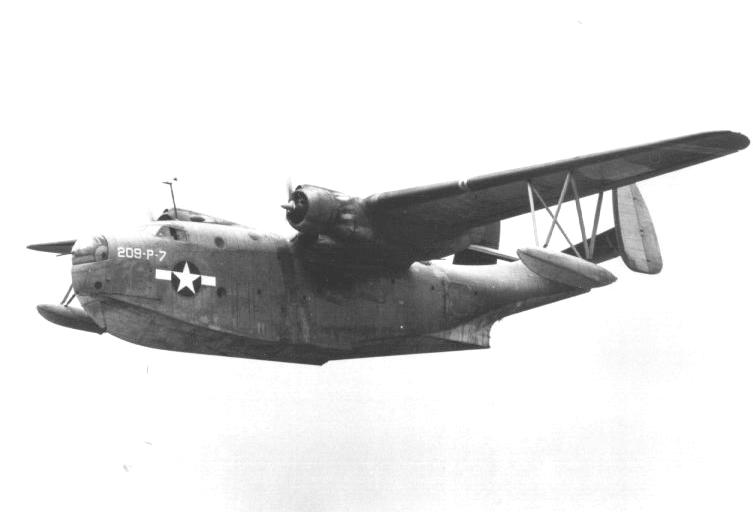
My father found this snippet about my grandfather in a book about Flying Boats in WWII.
The first known Mariner air-sea rescue "Dumbo" mission in the Pacific was performed by a NATS Pan American PBM.
At 0530 on 12 November 1943 the troop transport SS Cape San Juan was on its second voyage from San Francisco to Townsville, Australia, with 1,429 passengers. It was hit by a torpedo from a Japanese submarine. The explosion killed many of the U.S. Army troops on board and released oil that spread onto the surrounding water. A false word to abandon ship quickly spread and all but about two hundred men went over the side into the sea. They were immediately coated with a layer of oil. Survivors swam for jettisoned life rafts or clung to floating debris and kapok jackets. Cape San Juan listed on its starboard side as damage control tried shoring up the gaping hole and pumping out the incoming sea. The stricken ship remained afloat for another twenty-four hours.
The liberty ship SS Edwin T. Merideth rescued 443 people, including those remaining aboard the Cape San Juan. McCalla DD-488), Dempsy (DE-26), and minesweeper YMS-241 picked up 840 additional survivors. The sea then became rough as a storm system passed through the area, bringing swells that were up to fifteen feet high. These conditions exacerbated the situation for the men in th ewater.
A Pan American Mariner, just arriving in Suva, Fuji, on a cargo run, volunteered to assist in the rescue mission. Captain Moss gives his account in Lee Roy Way's "First PBM Rescue" article:
"We arrived at Suva at 1030 hours and were informed of the Cape San Juan's dilemma and the plight of the many survivors in the water. Our cargo was unloaded and we were airborne about noon. Our entire crew plus Navy Pharmacist Mate A. L. Burress volunteered for the mission and after three hours flying the Cape San Juan was sighted listing in 15 foot swells. We circled the ship three times without seeing anyone in the water. We were just about ready to give up when a New Zealand land plane was spotted circling some distance from the ship. Dropping lower and closer we sighted clusters of men in the water spread out for about 3 miles. Some were in life rafts, one life raft was drifting and the others were in life jackets in the middle of the oil slick.
"A landing was made in a relatively smooth area of the oil slick with 15 foot swells all around us. Unable to taxi very close to the survivors, we trailed life rafts behind the Mariner and survivors clambered in as the rafts passed by. In all, 48 survivors were brought aboard."
All known survivors were rescued when the Pan American Dumbo began its take-off. Not only was this the first Mariner open-sea rescue in the Pacific, no other aircraft ocean rescue before or since is known to have picked up so many people. (source)
My grandfather told me this story several times. It was his proudest achievement in a long career as a pilot. In fact, he kept the letters sent by grateful survivors and their families. In notes he made to me years later he noted, "the landing was pretty interesting but it didn't compare with the takeoff, which was one of the most spectacular and brutal takeoff I ever made. All in all an interesting but wild experience." I remember him telling me once that the sea gotten rougher in the time they were taking on passengers, so the takeoff was, in fact, quite dangerous. One newspaper report that the swells were between 30 and 50 feet! They were so heavy they dumped several tonnes of fuel. I think I remember him perhaps saying that they had to attempt that takeoff more than once.
It's a good story to tell around July 4th (or 1st, for that matter).
-t
No comments:
Post a Comment